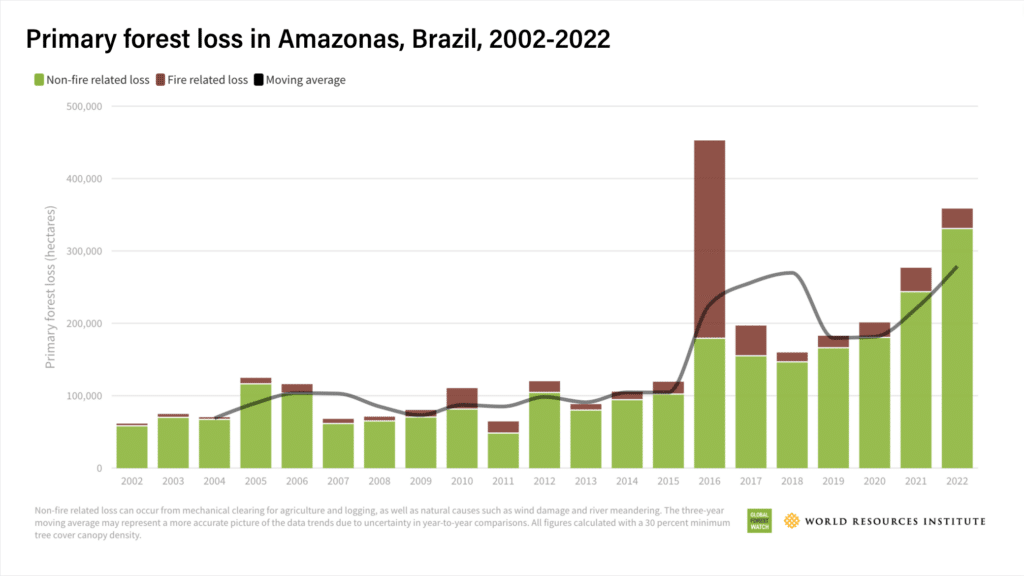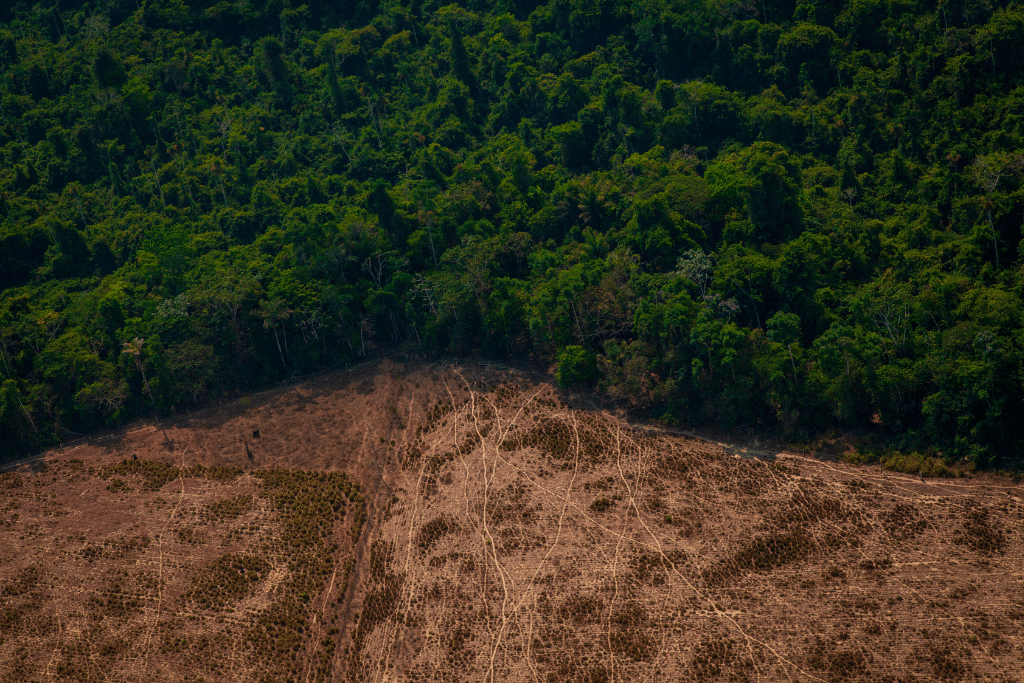Climate change-driven extreme weather conditions, wildfires, and deforestation are among the stressors threatening the survival of the world’s largest rainforest.
—
South America’s Amazon Rainforest is at risk of reaching a tipping point by mid-century, owing to “unprecedented stress” from a combination of climate change-related drivers, a new study has found.
Analysing evidence for five drivers of water stress in the region and critical thresholds that risk triggering the system’s collapse, researchers concluded that between 10% and 47% of Amazonian forests are at risk of collapsing by 2050.
“The region is increasingly exposed to unprecedented stress from warming temperatures, extreme droughts, deforestation and fires, even in central and remote parts of the system,” the study, published Wednesday in the scientific journal Nature, read, adding that crossing potential critical thresholds – or tipping points – might trigger “local, regional, or even biome-wide forest collapse” and knock-on effects for regional climate change.
“Once we cross this tipping point, we will lose control of how the system will behave,” said ecologist Bernardo Flores of the University of Santa Catarina in Brazil, lead author of the report. “The forest will die by itself.”
You might also like: 10 Amazon Rainforest Deforestation Facts to Know About
The Amazon is the world’s largest rainforest – spanning 6.9 million square kilometres (2.72 million square miles) across nine countries and covering around 40% of the South American continent. Making up half of the planet’s remaining tropical forests, the forest is also one of the most biologically diverse ecosystems, home to about three million species of plants and animals and 1.6 million indigenous people. The forest is also an important regulator of weather cycles, owing to its cooling effect and its contribution to rainfall and moisture supply in the region, and it is one of the world’s largest natural carbon sinks, absorbing and storing an amount of carbon equivalent to 15 to 20 years of global CO2 emissions from the atmosphere.
Yet, according to the study, large parts of the forest face wide-scale ecosystem transitions in the coming decades due to climatic and land use-related disturbances.
Indeed, despite global efforts to protect forest land, legal deforestation is still rampant, with around 15% of the Amazon already cleared, 17% degraded by human activities such as logging, fires, and under-canopy extraction, and a further 38% at risk due to prolonged droughts. About a third of global tropical deforestation occurs in Brazil’s Amazon forest, amounting to 1.5 million hectares each year.
And while Amazon deforestation has seen a sharp decrease since Lula took office in 2023, thanks to a series of interventions such as the crackdown on illegal miners and a pledge to end deforestation in the Amazon by 2030, the study suggests that a potential shift from slow to rapid forest decline might take place earlier than expected.

As a result of persistent deforestation and a sharp increase in wildfires, the Amazon has also been converted into a source of carbon, as it has been found to emit a greater amount of CO2 than it can absorb. According to a 2021 study, the forest emits about one billion tonnes of CO2 each year, equivalent to the annual emissions released in Japan, the world’s fifth-biggest polluter.
Since the 1980s, the Amazonian region has been warming significantly at an average rate of 0.27C per decade during the dry season, and it could be over 4C warmer by 2050, according to the study. Warmer temperatures and lower-than-average precipitation coupled with deforestation are also bringing unprecedented dry conditions to the region, leading to vapour pressure deficit and water stress, a threat to the forest’s ecosystems and indigenous peoples.
Since mid-2023, the Amazon River, the largest river by volume and the second-longest in the world, has been experiencing a historic drought that has left an estimated 30 million people stranded and struggling to access vital resources including fuel, food, and water. A study published late last month found that climate change-driven high temperatures were the main driver of the historic drought – a 1 in 100 year event on the Standardized Precipitation Index (SPI).
The only way to avoid biome-wide collapse, researchers said, is to limit deforestation to 10% of the forest’s total cover, restore at least 5% of the biome, and limit global heating to 1.5C above pre-industrial levels in line with the 2015 Paris Agreement target.
You might also like: Climate Change Will Bring Long Periods of Lethal Heat and Humidity By End of Century, Even Under 2C of Warming


















